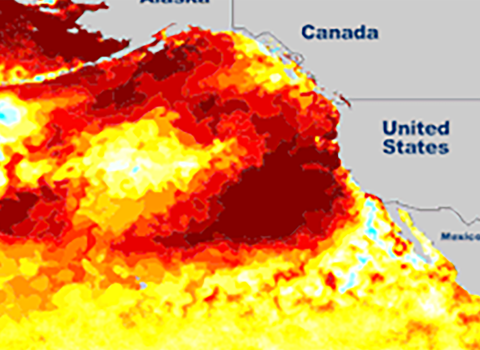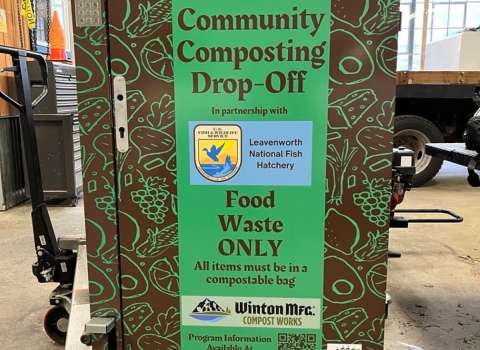It was late August in Washington, and a crowd of thousands amassed, buzzing with anticipation for the gates to open. However, these were not spectators swarming for a sporting event, these were tule fall Chinook salmon awaiting the opening of the fish ladder at Spring Creek National Fish Hatchery - in record breaking numbers.
“What a year!” exclaims hatchery manager, Dave Carie.
This year, Spring Creek NFH saw a record number of tule (pronounced “tool-ee”) fall Chinook salmon return to the hatchery. By the last collection day of October 3, a total of 111,554 tule fall Chinook salmon entered Spring Creek’s fish ladder. This boost in numbers also created ample fishing opportunities for both Tribal and non-Tribal fishers to harvest thousands of tule before the fish entered the hatchery.
For scale, Spring Creek NFH sees a return of approximately 30,000 to 40,000 tule through the ladder each year on average. A fish ladder is a structure the fish use to pass over what would otherwise be a barrier, and in this case it’s the entrance to the hatchery where they were spawned about four years earlier. The hatchery’s goal is to collect and spawn 8,000 adults annually, releasing approximately 12.5 million smolts into the Columbia River each spring.
Why did so many return? It’s a banner year for the tule because there have been several years of favorable environmental conditions recently. Kyle Hanson, deputy assistant regional director for the Fish and Aquatic Conservation program, explains that there are some general environmental conditions that affect the success of salmon:
Freshwater conditions such as river flows and temperatures can affect how many juvenile fish make it to the ocean and whether returning adults can survive to reach spawning grounds.
Ocean conditions can affect growth and survival, with ideal conditions including cool water off the coast and cold upwellings full of nutrients.
In previous years, conditions were challenging with hot ocean temperatures and the dreaded heat blob that diminished salmon returns. The National Oceanic and Atmospheric Administration’s stoplight table indicates the ocean conditions have been trending “greener” in recent years – moving in the right direction for the survival of salmon returning to the Columbia River Basin.
Benefits of a good year - The busy fish ladder at Spring Creek NFH also provided a great opportunity for learning. In the first year since 2019, the hatchery reopened to school groups who had an opportunity to see tule moving through the ladder. Thanks to the booming return, “visiting school groups got to see action in the ladder all season,” shares Cheri Anderson, information and education manager at Spring Creek NFH.
In addition to educating young minds, the abundance of fish will help feed many people.
This season, 94,452 tule fall Chinook salmon that entered the ladder were given to a local food bank. That’s about 765,000 pounds of salmon destined to help people.
“While not all of the surplus fish will make it to the table, due to size limitations and quality of the fillets, many people will be able to enjoy fresh salmon that otherwise would not be available,” shared Carie. “Kudos to the staff at Spring Creek National Fish Hatchery for finding ways to handle all these fish. The hatchery staff had to be very creative just to house all these critters. Nearly two semitrucks were loaded daily for the food bank, freeing up room for the next wave entering the hatchery. Spawning operations went very smoothly, where staff secured plenty of eggs for next year’s release.”
Learn more about Spring Creek National Fish Hatchery
What is a tule fall Chinook salmon?
Tule fall Chinook salmon are one of the three life history types of Lower Columbia River Chinook salmon. These three types are distinguished in part by the timing of their runs – spring run, fall (tule fall Chinook) and late fall (bright Chinook).






